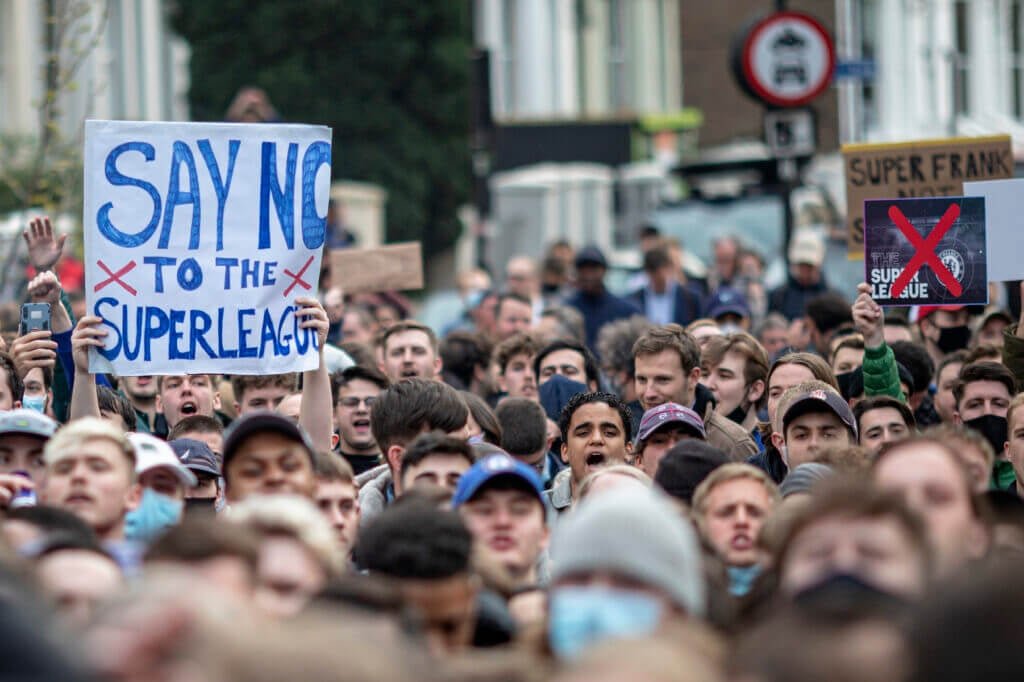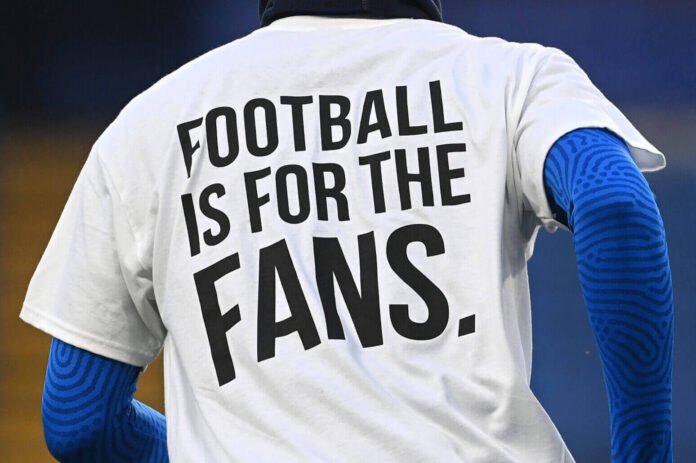A landmark moment in British football took place on Tuesday as the Football Governance Bill was introduced in the UK parliament to create an independent regulator for the sport.
In November 2021, a fan-led review called for the introduction of a regulator, with the government announcing plans to create one in February 2023.
The regulator will be independent from both the government and the football authorities. It will also be able to prevent breakaway competitions like the European Super League, hold powers around financial distribution and vet prospective owners and directors of clubs.
Here, Matt Slater and Peter Rutzler explain when the regulator will be in place, how much it will cost and how the world of football has responded.
When will the regulator actually begin work?
The regulator is the centrepiece of the Football Governance Bill that was given its first reading in parliament on Tuesday.
The bill must receive two more readings in the House of Commons, be reviewed by a parliamentary committee and go through the House of Lords, before it receives Royal Assent and becomes law.
But as this idea has cross-party support, it should pass through these stages without any hitches. The only possible snag is if this parliament runs out of time, with a general election expected before the end of the year. But even then, the bill is likely to have gone far enough to just be nodded through in what is known as the “wash-up” process before an election.
The bill has cross-party support (Darren Staples – WPA Pool/Getty Images)
This means, all being well, the independent football regulator should be in place by early 2025.
Who will run it and where it will be based are still undecided, although the recruitment process for a chair has started, with that person then being responsible for appointing an executive team.
How much will the regulator cost and who will pay for it?
We have a sense of how large the new body will be as it has been given an indicative budget of £10million ($12.7m; €11.7m) which will be funded by a levy on the clubs that are subject to the regulatory regime. These are the 116 clubs in the Premier League, English Football League and National League.
The biggest burden will fall on the broadest shoulders, which means the Premier League will pay the largest proportion, with the top flight’s highest earners paying the most. If we assume the Premier League pays about 80 per cent of the budget and its share is divided in a similar way to the Premier League’s broadcast income, the most successful clubs will be paying about £600,000 a year.
For context, football’s regulator will be far smaller and cheaper than the likes of the Gambling Commission or the Office of Communications, more commonly known as Ofcom, the communications regulator. And it will be a fraction of the size of the Financial Conduct Authority, which employs more than 4,000 people and has a budget of £755m.
Speaking at a meeting of the All-Party Parliamentary Group for Football Supporters on Tuesday, the bill’s spiritual mother Tracey Crouch, the former sports minister who wrote the report that laid out the case for independent regulation in 2021, said: “Football will be paying for itself. There are clauses within the bill that are very much around the levy. Obviously, it’s going to be something that is movable — so, people at the bottom of the pyramid have not got as much to pay as those at the top — but it will sustain itself over time.
“It is in football’s interest that we get this right. It is in football’s interest that it is adequately regulated. There will be great transparency in the way it’s run and operated.”
What powers will the regulator have?
What football will get for its money is detailed in the bill’s 130 pages and accompanying documents. The key points are a licensing regime for clubs to ensure compliance with financial regulations, fan engagement and the protection of club heritage.
The regulator will also take on responsibility for vetting prospective owners and directors of clubs, as well as making sure those custodians continue to meet the required standards, and will also have the power to stop clubs from joining breakaway competitions, such as the European Super League, if they are not meritocratic and open and also threaten the sustainability of the domestic leagues.
But its most contentious tool will be the so-called backstop powers it has to enforce a financial settlement on the game if it feels it is unable to perform its primary function, which is ensuring financial sustainability.
This level of intervention would have to be triggered by one of the leagues if certain thresholds are met. These would be if the distribution mechanism between the leagues has collapsed or there has been a significant change in the circumstances affecting the shared revenue, such as a new media rights deal.

Protests against the European Super League (Rob Pinney/Getty Images)
In regards to the other weapons at their disposal, probably the most eye-catching is the ability to impose fines of up to 10 per cent of a club’s annual revenue for serious breaches of the licensing regime.
The regulator will also be able to fine individuals and even, in the most egregious cases, force the sale of a club.
When would a regulator enforce a financial settlement?
How and when the regulator might exercise this power has been the topic of considerable speculation in recent months, as the Premier League’s clubs have failed to agree on a new financial distribution model that they can offer to the EFL.
The government had been hoping a “new deal for football” could be agreed by the leagues before the regulator was in place, making the backstop power moot for the foreseeable future. That could still happen now that everyone knows a new sheriff is on their way.
Why has the regulator been brought in?
The fan-led review might have called for a regulator, but that itself was caused by two significant moments in English football.
The first was the collapse of the historic club Bury in 2019, which led to the review being promised in the Conservative election manifesto of that year. The review was then brought forward due to the attempt by six of England’s biggest clubs — Arsenal, Chelsea, Liverpool, Manchester City, Manchester United and Tottenham Hotspur — to join the breakaway European Super League.

Premier League CEO Richard Masters (right) (Patrick Smith/Getty Images)
How did the Premier League respond?
While the EFL, Football Association, Football Supporters’ Association and government ministers, including Prime Minister Rishi Sunak, already expressed their hopes that the regulator can start work as soon as possible, the Premier League has made its misgivings clear.
In a statement issued on the eve of the bill’s reading, the Premier League said it remained “concerned about any unintended consequences of legislation that could weaken the competitiveness and appeal of English football”.
What about the EFL?
When asked about this risk on Tuesday, EFL chairman Rick Parry said: “Nothing is going to change the competitiveness of the Premier League.
“If you look back to 2009 when the Premier League was the number-one ranked league in Europe — we had teams winning the Champions League, three semi-finalists out of four for three years in a five-year spell — it was paying £600million a year more in wages than the next highest league.
“By 2019, that gap had widened to £1.6bn — it had widened by £1billion. By 2022, while we’d all been debating this, the gap between the Premier League and the other big leagues had widened to £2bn.
“The gap is just getting bigger, so the idea that the Premier League is going to be unduly constrained or no longer competitive, I just don’t even see how that argument gets to first base.”
(Top photo: Neil Hall – Pool/Getty Images)
Read the full article here


